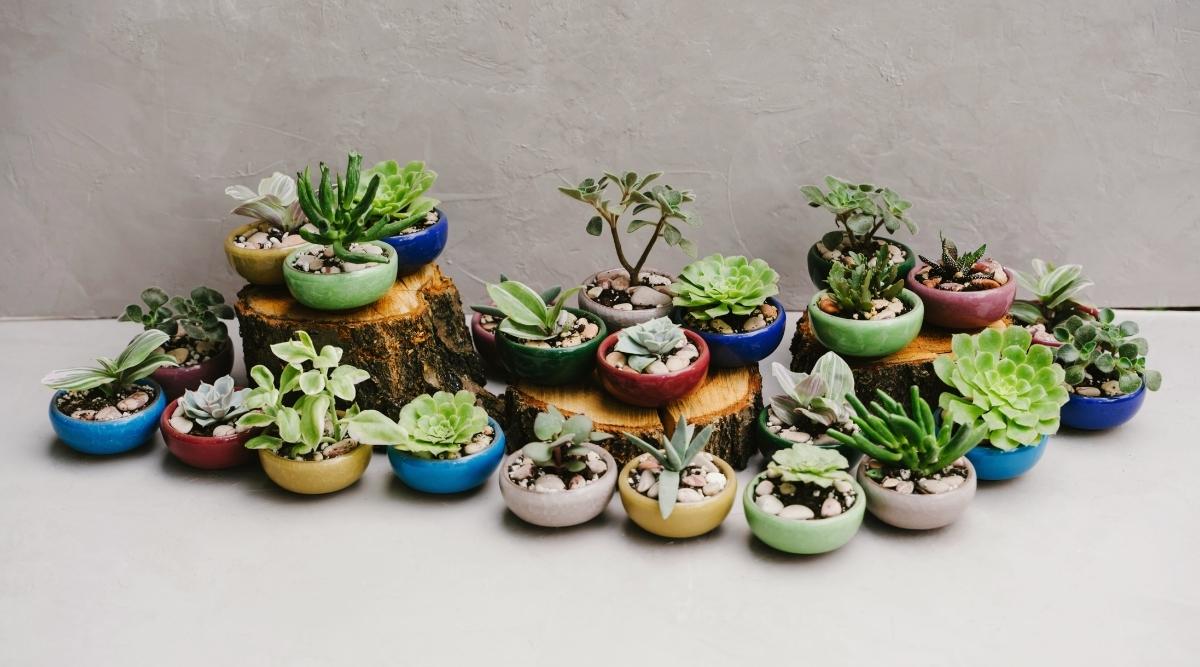Succulents are excellent plants for small spaces such as apartments and urban environments. Their compact size, low maintenance requirements, and unique shapes and colors make them ideal for indoor gardening. Here are some tips on how to grow and care for succulents in small spaces:
- Choose the right succulents: There are numerous varieties of succulents available, so select ones that are well-suited for indoor conditions. Some popular indoor succulents include Echeveria, Haworthia, Crassula, and Aloe vera. Look for species that thrive in low light and can tolerate dry indoor environments.
- Provide adequate sunlight: Succulents need bright, indirect light to thrive. Place them near a south or west-facing window where they can receive several hours of sunlight each day. If natural light is limited, you can use grow lights to supplement their light requirements.
- Use well-draining soil: Succulents require soil that drains well to prevent root rot. Use a commercial succulent or cactus mix, or make your own by combining regular potting soil with perlite or coarse sand to improve drainage.
- Water sparingly: Succulents are adapted to survive in arid conditions, so they don’t need frequent watering. Allow the soil to dry out completely between waterings, and then water thoroughly, ensuring water drains out of the pot. Overwatering is one of the most common causes of succulent death, so it’s essential to avoid keeping the soil constantly wet.
- Watch for signs of overwatering or underwatering: Overwatered succulents may develop yellow or mushy leaves, while underwatered succulents may have shriveled or wrinkled leaves. Adjust your watering routine accordingly to maintain the right moisture balance.
- Provide good airflow: Good air circulation helps prevent pests and diseases and promotes healthy growth. Avoid overcrowding your succulents, especially in small spaces, and make sure there’s enough space between plants for air to circulate freely.
- Monitor temperature and humidity: Succulents generally prefer warm temperatures ranging between 60°F and 80°F (15°C and 27°C). Most succulents can tolerate lower temperatures, but they may suffer if exposed to frost. In terms of humidity, succulents are adapted to low humidity, so indoor environments are usually suitable.
- Fertilize occasionally: Succulents have low nutritional requirements, so they don’t need frequent fertilization. Use a balanced, water-soluble fertilizer specifically formulated for succulents, and apply it sparingly during the growing season (spring and summer) following the instructions on the package.
- Rotate your plants: To ensure even growth, rotate your succulents periodically so that all sides receive equal sunlight. This helps prevent them from leaning towards the light source and promotes a balanced shape.
- Prune and propagate: If your succulent becomes leggy or elongated, you can prune it back to maintain a compact shape. Additionally, succulents are relatively easy to propagate. You can propagate them from leaves or stem cuttings, allowing you to expand your collection or share plants with friends.
Remember to observe and learn from your plants as you care for them. Each succulent species may have slightly different care requirements, so it’s helpful to familiarize yourself with the specific needs of the succulents you choose to grow. Enjoy the beauty of your succulent collection in your small space!

